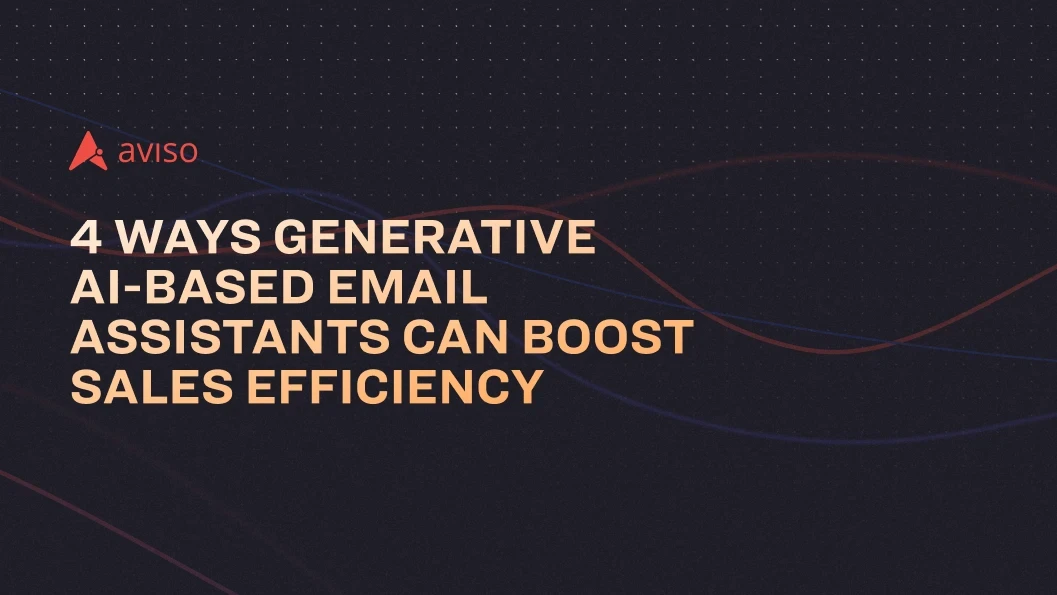6 Best Practices To Run Effective Sales Meetings
Aug 4, 2023
In the world of SaaS sales, meetings are the lifeblood of success. An effective sales meeting can progress deals forward, align teams, and ultimately drive the bottom line. However, many sales reps and managers need help running meetings that engage prospects and advance the sales process. In this blog, you will learn about five best practices to run effective sales meetings in your SaaS organization.
Setting a Clear Agenda
All great meetings start with a defined agenda that sets expectations upfront. An agenda serves several important purposes:
The meeting will outline and discuss the topics and goals. This helps focus the conversation productively.
Allows attendees to prepare in advance. They can gather essential information and come ready to participate actively.
Keeps the meeting on track time-wise. With an agenda, it's easier to avoid rabbit holes and tangents.
Provides a framework for follow-up. After the meeting, check the agenda to ensure you cover all points.
Some tips for creating a solid sales meeting agenda:
List out 2-4 key discussion topics/goals at most. Avoid an overloaded agenda.
Ensure that each line item is time-bound. This keeps the flow moving.
Include any pre-reads that attendees should review beforehand.
Send the agenda out at least 24 hours in advance. Last-minute agendas miss the prep opportunity.
Share the agenda again at the start of the meeting. It resets the purpose and acts as a guidepost.
Choose the Right Attendees
An effective sales meeting has the right mix of stakeholders in the room/on the call. Take care in curating the attendee list.
For prospect meetings, invite only essential decision-makers on both sides. Too many distracting attendees can dilute the discussion. But make sure to include representatives from any important functions like IT, finance, or operations if needed.
Internal sales meetings should include reps and managers directly involved in the account. It is great to have subject matter experts on standby if we require their expertise.
Keep the list as tight as possible for maximum productivity. Let peripheral stakeholders know they can review the meeting summary afterward. The right stakeholders truly need to be in the room for progress.
Utilize Sales Enablement Materials & Marketing Collaterals
Hook to value-based selling with the well-designed sales enablement materials and marketing collaterals. They are the force multipliers in client meetings to bring solution to life visually and make abstract concepts concrete.
Some examples of excellent sales enablement materials include:
Sales presentations with storytelling slides
Interactive product demos
Pipeline blindspot assessment
ROI calculators (Cost takeout calculator & value calculator)
Custom use case documents
Customer case study videos
Solution overview one-pagers
Enablement collateral engages prospects, progresses the buying journey, and differentiates you from the competition. But the materials should always aid (not dominate) the conversation. Use them fluidly to support your story.
Equip sales reps with ready-to-use materials through a digital sales portal. This amplifies their productivity and effectiveness in front of customers. Regularly update the assets to keep them fresh.
Drive the Meeting with Insightful Questions
Questioning skills are paramount for salespeople. Moving a complex B2B deal involves deeply understanding needs and tailoring the solution. Skilled open-ended questioning uncovers pain points, drives engagement, and advances discovery. Every sales meeting agenda should include time for open Q&A.
Some examples of insightful discovery questions:
"What are your main challenges with _______?"
"What is the size of the team & how is the team currently handling _______?"
"Where do you see gaps with your existing _______ solution?"
"What capabilities would be game-changers for your organization?"
"How might our platform help you achieve your goals?"
Listen closely to responses and probe deeper. Release your inner curious child. Mastering the art of questioning is a pillar of sales competence.
Close with Next Steps
The final critical moment of a sales meeting is the close. This is when you confirm the next steps to keep momentum going.
Effective closings ensure forward action in a few ways:
Review key takeaways from the discussion. Recap agreements & decisions.
Set due dates for any follow-ups like contracts, proposals, or product reports.
Schedule the next meeting while everyone is present. Get it booked before leaving the room.
Outline who exactly owns the next actions. Remove ambiguity.
Share post-meeting resources if applicable. Send calendar invites, trial links, contact info, etc.
When the next steps are concrete and assigned, deals keep advancing steadily. Weak closings leave open loops that stall sales cycles. End each meeting strongly with the next play clearly defined.
Send a Meeting Summary
Finally, complete every sales meeting with a high-quality summary sent to all attendees.
Well-written executive summaries serve multiple functions:
Capture vital information discussed for internal reference
Reinforce agreements & actions to keep stakeholders aligned
Summarize takeaways for stakeholders who didn't attend the meeting
Provide artifacts needed for compliance and forecast accuracy
Demonstrate excellent communication and follow-through
An effective sales meeting summary includes the following:
Brief background on the purpose of the meeting
Key highlights organized by agenda topics
A concise overview of agreed next steps and owners
Due dates for any open actions or follow-ups
The exact date, time, and attendees of the next or follow-up meeting, if applicable
Ideally, we should send summaries within 24 hours while the discussion remains fresh. They bring professionalism and fluidity to sales meetings, thereby summarizing the progress.
Conclusion
The art of running effective sales meetings takes practice, but mastering it is crucial for sales success. It is crucial to follow best practices in various areas to make progress and close deals. These areas include agendas, attendees, sales materials, marketing materials, questioning, and summaries.
You can improve your sales meetings by focusing on these areas and utilizing your knowledge of the five pillars. This will enable you to engage with buyers, identify opportunities, and ultimately increase revenue. Hone your skills in progress-focused sales meetings, and watch your pipeline grow. The power of effective sales meetings is real, and it fuels the deal closures like never before.




